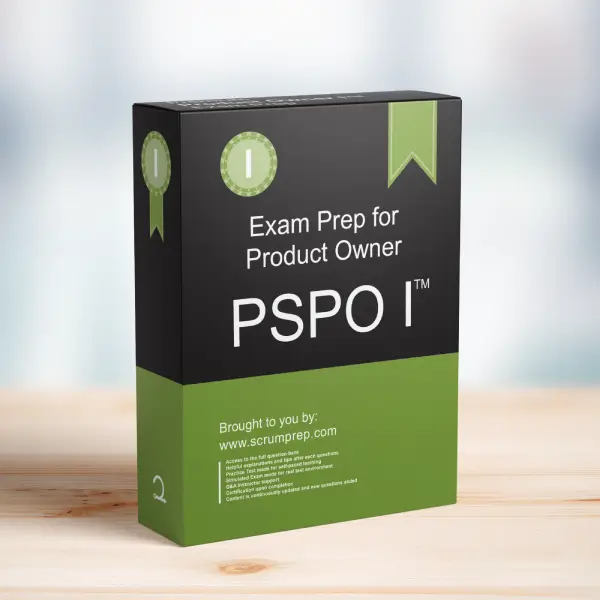Measuring Success of a Product Built through Scrum
Understanding how to measure the success of a product developed using Scrum is crucial for continuous improvement and delivering value.
Exam Question
How does an organization know that a product built through Scrum is successful?
(choose the best answer)
- A. By measuring the actual time spent on development versus the time estimated for development
- B. By measuring that velocity has increased since the last release
- C. By the Product Owner and stakeholders accepting the Increment at the Sprint Review
- D. By releasing often, and updating key performance indicators (KPIs) on value after every release and feeding this information back into work on the Product Backlog
Correct Answer
D. By releasing often, and updating key performance indicators (KPIs) on value after every release and feeding this information back into work on the Product Backlog
Explanation
Why D is Correct
- Frequent Releases: Regular releases allow the organization to continuously gather feedback and measure the impact of the product in real-world scenarios.
- KPIs on Value: Key performance indicators on value help in assessing the product’s success in meeting business objectives and customer satisfaction.
- Feedback Loop: Feeding the updated KPI information back into the Product Backlog ensures that future work is aligned with achieving the maximum value.
Why A, B, and C are Incorrect
- A. Measuring actual time spent versus estimated time:
- This measures efficiency in terms of time management but does not necessarily reflect the value delivered to the customers or the business.
- B. Measuring increased velocity:
- While increased velocity can indicate improved team performance, it does not directly correlate with the success of the product in delivering value.
- C. Product Owner and stakeholders accepting the Increment:
- Acceptance at the Sprint Review is important, but it only indicates short-term approval. Long-term success is measured by the product’s impact and value delivered over time.
Responsibilities in Scrum
- Product Owner: Accountable for maximizing the value of the product by managing the Product Backlog. Regularly interacts with stakeholders to gather feedback and updates the Product Backlog based on KPI insights.
- Scrum Master: Facilitates the Scrum processes and ensures that the Scrum Team adheres to Scrum principles, supporting continuous improvement.
- Developers: Collaborate with the Product Owner to refine the Product Backlog and deliver valuable Increments that meet the Definition of Done.
Relevance to the PSPO I Exam
Understanding how to measure the success of a product is crucial for the PSPO I exam. This knowledge emphasizes the importance of continuous feedback, regular releases, and using KPIs to guide future work.
Key Takeaways
- Frequent Releases: Regularly releasing Increments allows for continuous feedback and improvement.
- Value-Based KPIs: Measuring success through KPIs on value ensures alignment with business objectives.
- Feedback Loop: Continuously feeding KPI insights back into the Product Backlog helps in prioritizing future work effectively.
Conclusion
Measuring the success of a product built through Scrum involves regular releases, assessing key performance indicators on value, and incorporating feedback into the Product Backlog. This approach ensures that the product continuously delivers value and meets business objectives.
For comprehensive preparation and practice exams, check out PSPO I Exam Prep to enhance your understanding and application of Scrum principles.



